As we browsed on websites, there are quite a few design ideas about Art Deco, which adds touch of retro and showcases the glamour and luxury vibe to the interior spaces. Art Deco furniture embodies the spirit of a bygone era while remaining utterly contemporary in its appeal. Now let’s take a look at the history and features of such style.
What is Art Deco?
Art Deco, short for the French Arts Décoratifs, is a style of visual arts, architecture, and design that emerged in France in the early 20th century, particularly in the period between World War I and World War II. It also became popular in the 1920s and 1930s in the United States.
The style tends to use of geometric shapes, streamlined forms, and bold colors to present its beauty. Even though it is different from other styles, Art Deco was influenced by a wide range of sources, including the Art Nouveau movement, the Cubist and Futurist art movements, and the industrial design of the early 20th century.
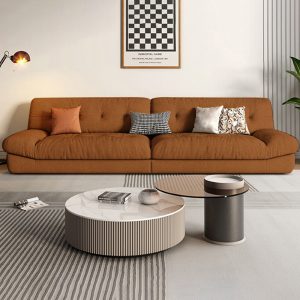
People tend to think it emphasizes luxury, glamour, and modernity, and it was often associated with the machine age and the rise of industrial production. Art Deco architecture is characterized by its use of bold, geometric forms, often featuring stepped facades and stylized ornamentation.
What are the key features of Art Deco furniture?
Art Deco furniture originated from 1920s and is still widely-accepted among most people today. If you tend to add Art Deco pieces to home, please discover the key characteristics here:
- Geometric shapes: Art Deco furniture often features angular, geometric shapes such as triangles, zigzags, and chevrons.
- Bright colors: Bold, contrasting colors such as black, white, and red is also an obvious element in Art Deco furniture design, often paired with metallic accents.
- Luxurious materials: Such style of furniture tends to use high-quality and expensive materials such as exotic woods, marble, ivory, and precious metals.
- Streamlined design: Art Deco furniture was inspired by the streamlined design of modern machinery, and often featured sleek, curved lines and a streamlined appearance.
- Ornate details: Despite its streamlined design, Art Deco furniture also incorporated decorative and ornate details such as intricate carving, inlay work, and decorative motifs.
- Symmetry: It often featured a sense of balance and symmetry, with identical or mirrored forms on either side of a central axis.
- Functionality: Those furniture are both functional and aesthetically pleasing, often incorporating clever storage solutions and multifunctional pieces.
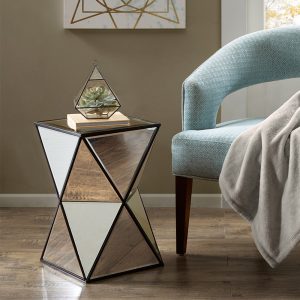
Examples of Art Deco Furniture
1. Trapezoidal Marble Media Console
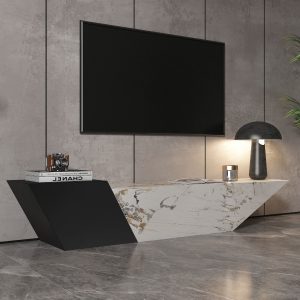
2. Diamond Shaped Stone Coffee Table
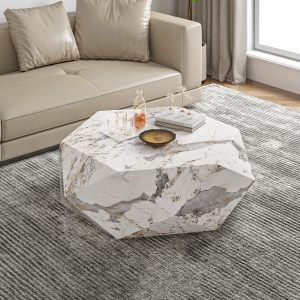
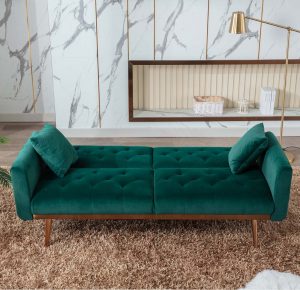
4. Side Table with Streamlined Design and Mirror Tabletop
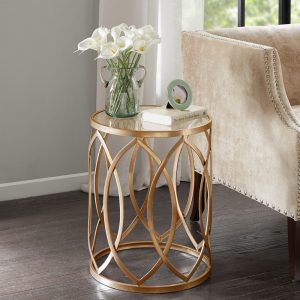
FAQ:
Is Art Deco considered vintage?
Even though no style can be copied, Art Deco is generally considered a vintage style, popular during the 1920s and 1930s, and although it has experienced periods of revival and renewed interest, it is largely associated with that specific historical era. Vintage items are usually considered to be at least 20 years old, and since Art Deco is almost a century old, it certainly falls into this category. However, it’s worth noting that vintage can be a somewhat fluid term and its definition may vary depending on the context or industry. In any case, Art Deco remains a popular and highly valued style, both for its historical significance and its enduring aesthetic appeal.
What is the difference between Art Nouveau and Art Deco furniture?
They are two distinct styles of furniture that emerged in the late 19th and early 20th centuries. Although there are some similarities between the two styles, there are also some notable differences. Here are a few key differences between Art Nouveau and Art Deco furniture:
- Inspiration: Art Nouveau was inspired by natural forms, such as flowing vines and flowers, and often featured curvilinear lines and organic shapes. Art Deco, on the other hand, was inspired by modern technology and industry, and often featured geometric shapes and streamlined forms.
- Materials: The former one often comes with natural materials such as wood, stone, and stained glass. In contrast, Art Deco furniture made use of synthetic materials such as Bakelite, chrome, and glass.
- Ornamentation: Art Nouveau furniture often featured intricate, ornate details such as floral motifs, while Art Deco furniture was more streamlined and focused on bold geometric shapes and patterns.
- Color: Art Nouveau pieces often featured muted, natural colors, while Art Deco furniture was characterized by bold, contrasting colors.
- Period: Art Nouveau was most popular from the 1890s to the early 1910s, while Art Deco was most popular from the 1920s to the early 1940s.
Are there other furniture styles also popular during the same period (1920s-1930s)?
The 1920s-1930s were a time of significant innovation and experimentation in furniture design, with several distinct styles emerging and coexisting alongside each other.
- Bauhaus: The Bauhaus style emerged in Germany in the early 20th century and emphasized simple, functional design. Bauhaus furniture was often made from industrial materials such as steel and glass and featured clean lines and geometric shapes.
- Modernism: Modernist furniture design focuses on functionality, minimalism, and the use of new materials such as plastics and fiberglass.
- Scandinavian design: Scandinavian design emerged in the 1930s. And it tends to care more about simplicity, functionality, and natural materials such as wood and leather.
- Hollywood Regency: Hollywood Regency style emerged in the 1930s. was characterized by its luxurious, glamorous aesthetic and its use of bold colors and patterns.
- Art Moderne: Art Moderne, or Streamline Moderne, emerged in the 1930s and was characterized by its aerodynamic shapes, streamlined forms, and focus on modern technology and transportation.